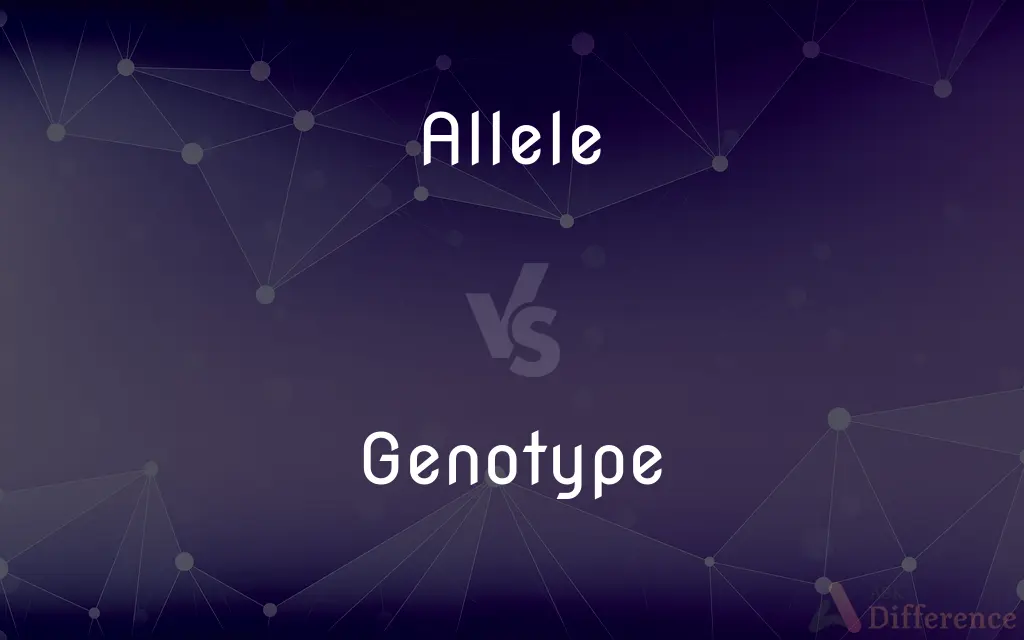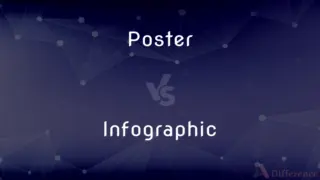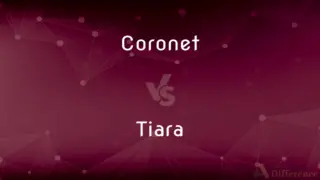Allele vs. Genotype — What's the Difference?
Edited by Tayyaba Rehman — By Fiza Rafique — Updated on September 30, 2023
An "Allele" is a variant form of a gene, while a "Genotype" is the combination of alleles an individual has for a specific gene. Both relate to genetics, but "Allele" refers to the variation, and "Genotype" to the pair.

Difference Between Allele and Genotype
Table of Contents
ADVERTISEMENT
Key Differences
In the realm of genetics, both "Allele" and "Genotype" play crucial roles in understanding inheritance and variation. An "Allele" represents a version or variant form of a gene. For instance, for a gene controlling eye color, there might be a blue Allele and a brown Allele. In contrast, "Genotype" refers to the specific pair of alleles an individual possesses for a particular gene.
Moving further into the intricacies of these terms, it's vital to understand that every individual has two alleles for every gene - one inherited from each parent. The "Genotype" embodies this combination. So, if an individual has one blue Allele and one brown Allele for the eye color gene, their Genotype for that gene is heterozygous. The term "Allele" simply describes each of these variants without referencing their pairing or combination.
Furthermore, while "Allele" focuses on the variant forms a gene can take, "Genotype" provides insight into the genetic makeup of an individual for that specific gene. For instance, having two identical alleles (like two blue Alleles) would be a homozygous Genotype for eye color, while having two different alleles would be heterozygous.
To summarize, while both "Allele" and "Genotype" are foundational in genetic studies, they serve different purposes. "Allele" denotes the variations a gene can have, and "Genotype" indicates the specific combination of these alleles in an individual.
Comparison Chart
Basic Meaning
A variant form of a gene.
The combination of alleles for a specific gene.
ADVERTISEMENT
Contextual Use
Used to describe genetic variations.
Used to describe an individual's genetic makeup.
Number in an Individual
Every gene has two alleles in diploid organisms.
Represents the pairing of two alleles.
Variations
Can have multiple alleles for a gene in a population.
Two main types: homozygous and heterozygous.
Genetic Implication
Indicates possible variations a gene can take.
Determines possible phenotypic outcomes.
Compare with Definitions
Allele
One of the variant forms of a gene at a particular location.
Blue and brown eye colors result from different Alleles of the same gene.
Genotype
The combination of alleles inherited from both parents.
His Genotype includes alleles from both his mother and father.
Allele
A specific version of a gene that can produce a characteristic.
Each parent contributes one Allele to their offspring's genotype.
Genotype
The set of genes responsible for a particular trait.
The Genotype of an organism influences its physical characteristics.
Allele
A genetic code that can be dominant or recessive, determining traits.
A dominant Allele will typically mask the expression of its recessive counterpart.
Genotype
A description of an organism's genetic constitution.
Knowing an individual's Genotype can predict certain health outcomes.
Allele
A DNA sequence variation which can result in different phenotypic states.
The presence of an Allele can influence an individual's trait expression.
Genotype
The paired alleles present in an organism.
A homozygous Genotype consists of two identical alleles for a trait.
Allele
One of two or more alternative forms of a gene.
For the blood type gene, there are three primary Alleles: A, B, and O.
Genotype
The genotype of an organism is its complete set of genetic material. However, the term is often used to refer to a single gene or set of genes, such as the genotype for eye color.
Allele
An allele (UK: , ; US: ; modern formation from Greek ἄλλος állos, "other") is one of two, or more, forms of a given gene variant. For example, the ABO blood grouping is controlled by the ABO gene, which has six common alleles.
Genotype
The genetic makeup, as distinguished from the physical appearance, of an organism or a group of organisms.
Allele
Any of the alternative forms of a gene or other homologous DNA sequence. Also called allelomorph.
Genotype
The combination of alleles located on homologous chromosomes that determines a specific characteristic or trait.
Allele
(genetics) One of a number of alternative forms of the same gene occupying a given position, or locus, on a chromosome.
Genotype
A specific combination of alleles at one or more loci on a chromosome.
Allele
One of two or more alternative forms of a gene that can have the same place on homologous chromosomes and are responsible for alternative traits.
Genotype
(genetics) The part (DNA sequence) of the genetic makeup of an organism which determines a specific characteristic (phenotype) of that organism.
Allele
Either of a pair of Mendelian characters that may occur in an organism as a consequence of variation at one gene locus.
Genotype
A group of organisms having the same genetic constitution.
Allele
One of two alternate forms of a gene that can have the same locus on homologous chromosomes and are responsible for alternative traits;
Some alleles are dominant over others
Genotype
The type species of a genus; generitype.
Genotype
(transitive) To determine the genotype of.
Genotype
A group of organisms sharing a specific genetic constitution.
Genotype
The genetic constitution of an organism, specifying the particular alleles at defined loci in the genome; - used with respect to one gene, a specific group of genes, or the entire set of genes within the organism. Contrasted with phenotype.
Genotype
A group of organisms sharing a specific genetic constitution
Genotype
The particular alleles at specified loci present in an organism
Genotype
The genetic makeup of an individual for a specific trait.
Her Genotype for eye color results in green eyes.
Common Curiosities
How many Alleles does an individual have for each gene?
In diploid organisms, an individual has two Alleles for each gene, one from each parent.
Can Genotype predict physical appearance?
Yes, Genotype can influence phenotypic (physical) outcomes, but environment also plays a role.
What does a heterozygous Genotype mean?
A heterozygous Genotype means an individual has two different alleles for a specific gene.
What is a homozygous Genotype?
A homozygous Genotype means both alleles for a gene in an individual are identical.
How are diseases linked to Alleles?
Some diseases are caused by specific Alleles that result in faulty protein production.
What's the primary difference between an Allele and a Genotype?
An "Allele" is a variant of a gene, while "Genotype" refers to an individual's paired alleles for a gene.
Can a gene have multiple Alleles in a population?
Yes, a gene can have multiple Alleles within a population, like the A, B, and O alleles for blood type.
Is an Allele always visible in appearance?
No, a recessive Allele is only visible phenotypically if the individual has two copies.
Share Your Discovery

Previous Comparison
Poster vs. Infographic
Next Comparison
Coronet vs. TiaraAuthor Spotlight
Written by
Fiza RafiqueFiza Rafique is a skilled content writer at AskDifference.com, where she meticulously refines and enhances written pieces. Drawing from her vast editorial expertise, Fiza ensures clarity, accuracy, and precision in every article. Passionate about language, she continually seeks to elevate the quality of content for readers worldwide.
Edited by
Tayyaba RehmanTayyaba Rehman is a distinguished writer, currently serving as a primary contributor to askdifference.com. As a researcher in semantics and etymology, Tayyaba's passion for the complexity of languages and their distinctions has found a perfect home on the platform. Tayyaba delves into the intricacies of language, distinguishing between commonly confused words and phrases, thereby providing clarity for readers worldwide.














































